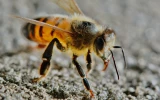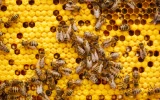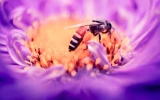25 Interesting Facts About Bees You Probably Don't Know
Aside from knowing that bees serve as a critical pollinator for our food supply and that their honey has a variety of uses, did you also know about these 25 interesting facts about bees?
Bees are the only insects that produce food for humans. They can recognize human faces, smell with their antennae, detect an electric field when searching for flowers, fly up to 15 miles per hour to visit two million flowers, and detect the ultraviolet patterns on them, yet they cannot see the color red.
Let's dive into all the fascinating facts about bees that you may not have known, from their unique behavior to how humans rely on them.
Summary
- Bees have 5 eyes and four wings to use for searching for flowers to pollinate.
- Bees can detect an electric field, the amount of sugar, and ultraviolet patterns on flowers.
- Bees use a magnetic compass to visit around two million flowers to make one pound of honey.

On this page:
25 Interesting Facts About Bees
Bees are truly amazing creatures. Bees are amazing, and there is still so much to learn about them. Here is a list of facts about them.
1. Bees are the only insects that produce food for humans.
Honey is the most well-known product of bees and is used in many recipes and as a sweetener. But bees also produce other edible products, such as royal jelly, propolis, and bee pollen.
2. Bees can fly up to 15 miles per hour.
This incredible speed helps them quickly move from flower to flower, gathering nectar and pollen that they use to make honey. This helps them find food sources that are farther away, as well as better defend their hives from predators.
3. Bees have five eyes.
Bees have five eyes, which are all located on the sides and top of their heads. Their two compound eyes are the largest and are made up of thousands of tiny lenses that help the bee see in color. They also have three small eyes called ocelli, which provide the bee with the ability to sense light and dark.
4. Bees have four wings, two on each side.
Each wing works in unison with the others to help the bee fly. The front wings are larger than the back ones and are connected by a row of hooks. The front wings are responsible for creating lift, while the back ones provide thrust. The wings are covered with tiny ridges of tiny hairs that help the bee sense the air around them.
4. Bees can smell with their antennae.
Bees have a remarkable sense of smell, which they use to navigate the world around them. One of the key organs responsible for their olfactory senses is the antenna. These antennae are covered in odor receptors that help the bee detect odors in the air. The bee can then use this sensory information to identify flowers and locate food sources.
5. Bees can detect an electric field.
This electric field is generated when the bee's wings move through the air and interact with the electric fields of flowers. By sensing this electric field, the bee can determine the direction and distance of a particular flower and will fly toward it. The sensitivity to electric fields gives bees an edge when it comes to finding nectar-rich flowers, and helps them find the most efficient route between flowers.
6. Bees can see all colors except for red.
Bees have an amazing ability to see all colors of the spectrum, from ultraviolet to infrared. However, there is one color that they cannot see: red. This is because bees have no receptors for the red light wavelength, so the color appears invisible to them. This does not mean that bees don’t recognize red, however.
7. Bees can remember and recognize individual human faces.
This amazing feat was discovered by researchers in 2008 when they trained a group of honeybees to recognize a set of human faces. The bees were shown images of different people, and then rewarded when they chose the same image again.
The bees accurately identified the faces over 70 percent of the time, showing an impressive level of recognition. This skill is believed to be related to their foraging behavior, as it allows them to recognize a familiar face that may have previously provided them with food or nectar.
8. Honeybees communicate through a complex "dance" language.
Through a behavior known as a “dance language”, honeybees can share information about the location of food and other resources. The dance is composed of different movements and orientations that correspond to the direction and distance of the resources. The dance language is based on a system of symbols and codes that allow bees to communicate quickly and efficiently with each other.
9. Bees are the only insect that makes wax.
Bees are the only insect that makes wax, which is an incredible feat. This wax is produced by special glands located on their abdomens and is used to make honeycomb cells, which they then fill with honey and pollen. Bees are also the only insects that can produce wax at specific temperatures, making them an incredibly valuable resource for beekeepers and pollinators alike.
10. Honeybees visit around two million flowers to make one pound of honey.
While visiting each flower, they collect nectar, which is stored in a honey stomach. Once the honey stomach is full, the nectar is transported back to the hive and placed in honeycomb cells where it is broken down and turned into honey. The worker bees have to take multiple trips to fill the comb cell.
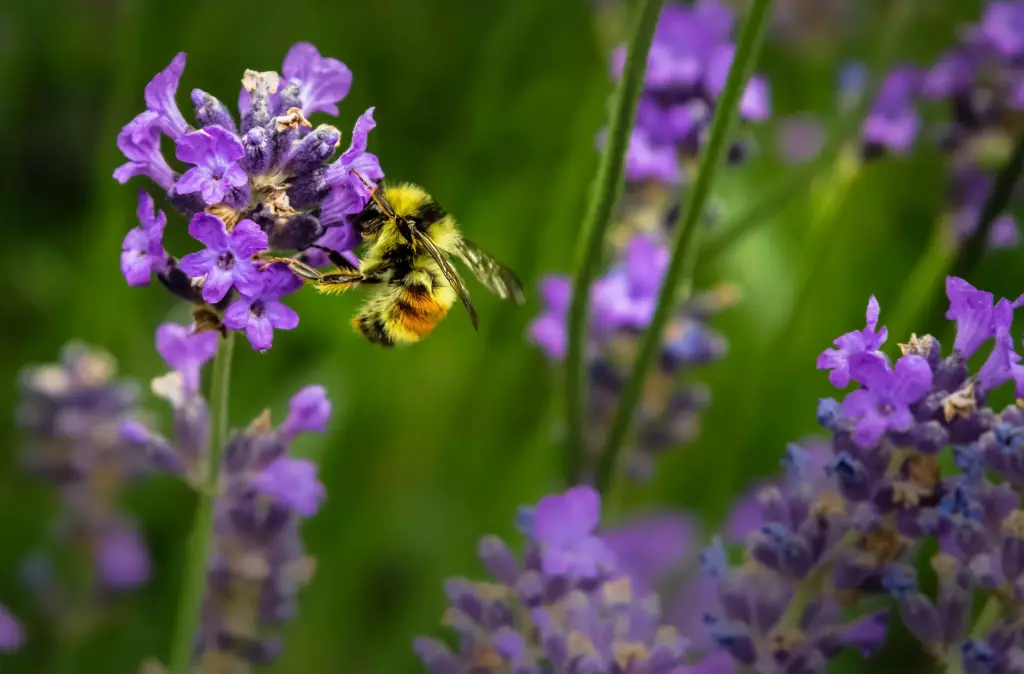
11. There are 20,000 different species of bees in the world.
There are an estimated 20,000 different species of bees in the world today. Bees are found on every continent except Antarctica, and they play an important role in our environment as pollinators.
12. Only female bees make honey.
Female honeybees are responsible for the majority of the honey production in a hive. Worker bees, who are all female, are the ones who collect nectar from flowers and convert it into honey.
13. Bees have been around for more than 30 million years.
Bees are one of the oldest insects on Earth, having been around for more than 30 million years. They are an essential part of the food chain, and their continued existence is essential for the health of the planet.
14. A single honeybee colony can contain up to 60,000 bees.
These bees are busy creatures, flying from flower to flower to collect nectar and pollen to feed the colony. Queen bees as the leader, worker bees do the work in the hive, males bees are the drones are components that make a honeybee colony a fascinating and complex organism.
15. Bees have a barbed stinger.
Bees have a barbed stinger that they use for defense against predators. The barbed stinger is a modified egg-laying organ that is used to inject venom. The bee will fly up to the predator, sting it, then quickly fly away.
16. Bees have taste receptors on their feet.
Bees have taste receptors on their feet, allowing them to detect sweet nectar or watery solutions as they walk along a flower. In addition to their antennae and mouth parts, the taste receptors on their feet help the bees find food sources. The taste receptors help the bees distinguish between different types of flower nectar, so they can tell which flowers they should feed from.
17. Bees can detect the ultraviolet patterns on flowers.
This unique skill allows them to find flowers and collect nectar even in the dark. The ultraviolet patterns on flowers help them determine the flower’s shape, size, and even the location of the nectar.
18. Bees can detect the amount of sugar in the nectar of a flower.
By using their sensitive antennae and tongues, bees can tell if the flower has a high sugar content or not. Furthermore, bees can "taste" the nectar and determine which flower has the highest sugar content.
19. Bees can learn and remember different floral scents.
This is an important part of their ability to find food and pollinate plants. Research has shown that bees can learn and remember the scent of flowers from as far away as three miles. The bees use pheromones to recognize each other and recognize the scent of nectar-bearing flowers. They can remember the scents for weeks and even months, allowing them to find food and pollinate plants.
20. Bees produce beeswax to build their hives.
Bees use beeswax to form their hives and to seal up the honeycomb cells. Beeswax is also used to build honeycombs, which are structures that contain honey and bee larvae. Beeswax is essential for the survival of the bee colony and protects from the elements, predators, and parasites.
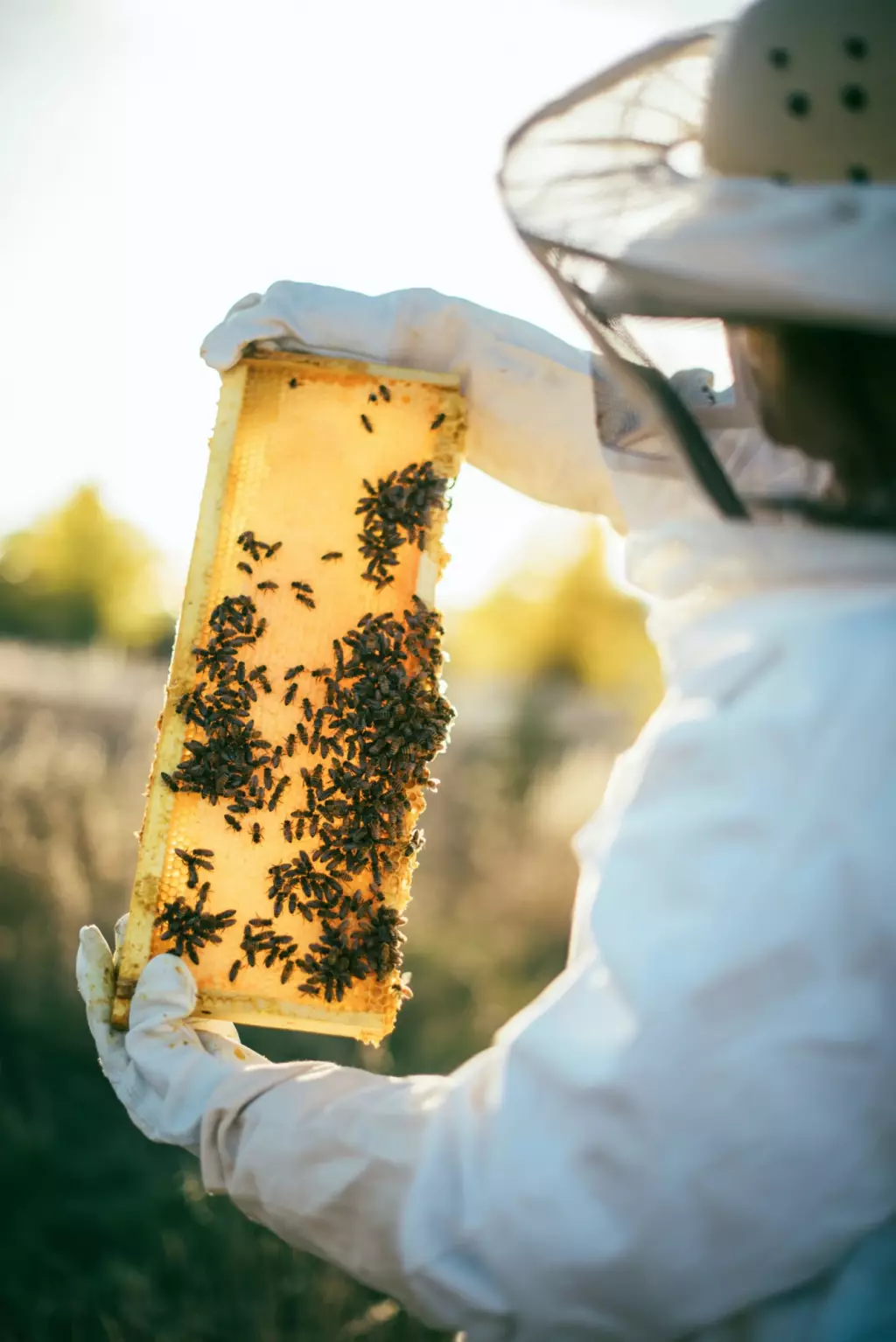
21. Bees have one of the most complex navigation systems in the world.
The bee’s internal navigation system, called the “magnetic compass”, is believed to be based on the earth’s magnetic field. This allows them to navigate even when the landscape is unfamiliar. Through this complex navigation system, bees can travel up to 5 kilometers in search of food and return to the hive with remarkable accuracy.
22. Bees can adjust the temperature inside their hives.
They do this by controlling the airflow within the hive and flapping their wings to create a cooling effect. Additionally, the bees can also reduce the temperature of the hive by clustering together to create a type of insulation. This helps the bees to maintain a safe and comfortable environment for their colony.
23. Worker bees live only 6 weeks in the summer and 4 months in the winter.
Worker bees are the workhorses of a honey bee colony, living only 6 weeks during the summer and 4 months in the winter. During their short lives, they are responsible for many tasks in the hive, such as collecting nectar and pollen, building the wax comb, and feeding and grooming the larvae.
24. Male bees do not have stingers.
Because they don't have stingers, drones are not able to defend the hive, but they are still important for the colony's survival.
25. Queen bees are fed on royal jelly.
Queen bees are fed a special diet of royal jelly to help them grow and develop. This helps to ensure the hive will have a strong and healthy leader.
